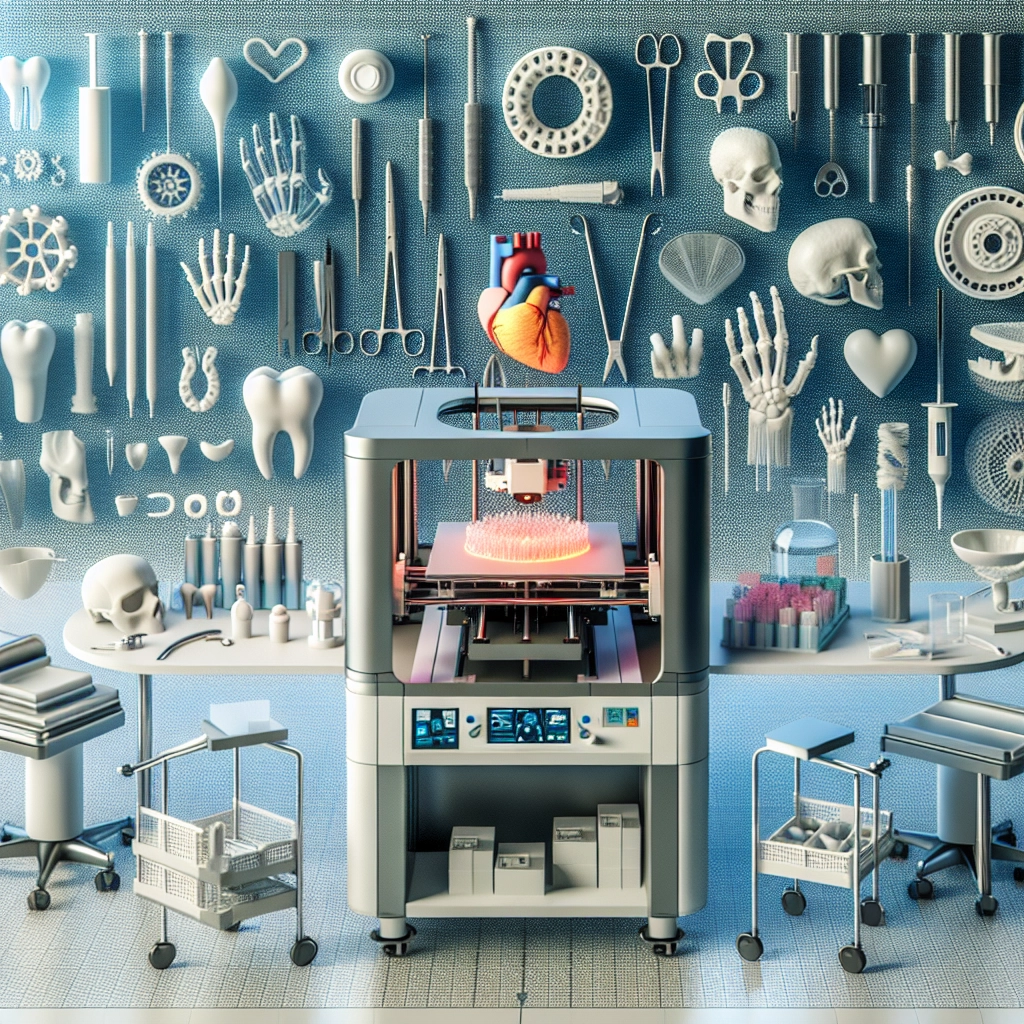The Impact of 3D Printing on the Medical Industry
In the last decade, 3D printing transitioned from an exciting yet niche technology to something that’s fundamentally altering various industries—none more so than healthcare. This revolutionary approach to manufacturing has enabled the creation of customized medical solutions that were once thought to be decades away from realization, paving the way for a future where everything from surgical tools to prosthetics is tailor-made. Let’s dive into how 3D printing is making waves in the medical world.
Personalized Medical Solutions
One of the standout features of 3D printing is its ability to create personalized products. Doctors can now use imaging scans like MRIs or CT scans to print perfectly fitting implants or prosthetics tailored to an individual patient’s anatomy. This precision not only enhances comfort but also improves the overall effectiveness of treatments. For instance, orthopedic implants that are custom-fitted to a patient’s bone structure can lead to better outcomes and faster recoveries.
Imagine needing a knee replacement. Traditionally, a one-size-fits-all implant was used, sometimes leading to less-than-optimal fit and complications down the road. But with 3D printing, surgeons can craft a knee implant that intuitively molds to the patient’s unique specifications. This level of customization empowers medical professionals to not only treat patients more effectively but also to foster a more personal connection between the patient and their care.
Innovations in Surgical Procedures
3D printing doesn’t just stop at prosthetics; it’s also revolutionizing the way surgeries are performed. Surgeons can create 3D models of organs and tissues, which allows for meticulous pre-operative planning. Rather than relying solely on 2D scans, doctors can physically manipulate a 3D model to better understand the surgical site. This enhancement in training and preparation can lead to fewer complications and more successful outcomes.
Intra-operative 3D printing can also provide unique solutions during surgery. For instance, if a surgeon encounters an unexpected complication that requires instantaneous action, they could potentially print a required item—like a surgical guide—right in the operating room. This could drastically change the speed and effectiveness of surgical procedures, leading to quicker recovery times and reduced stress for both patients and healthcare providers.
Prosthetics That Fit Like a Glove
The world of prosthetics has undergone a dramatic transformation with the advent of 3D printing. Traditionally, prosthetics were expensive, time-consuming to make, and often felt uncomfortable for the user. With 3D printing, the cost and time to create high-quality prosthetic limbs have significantly decreased. Plus, the design can be customized to provide a better quality of life for users.
One inspiring example is the work being done with bionic limbs. 3D-printed prosthetics have been infused with advanced technology, allowing for greater mobility, flexibility, and even sensory feedback, transforming how amputees experience their limbs. It’s incredible to think that someone who has lost a limb can gain a sense of their surroundings again through advancements in technology that merge with 3D innovation.
Bioprinting: The Next Frontier
Perhaps the most futuristic application of 3D printing in medicine is bioprinting, which involves creating living tissue and organ structures. This technology is still in its early stages, but researchers are optimistic about its potential to address the organ transplant shortage. Imagine a day when we can print human organs on demand, vastly diminishing the waiting lists that can mean life or death for many patients.
While we may not be there just yet, the strides being made in bioprinting are exciting. Scientists are experimenting with printing skin cells for burn victims and developing organoids for research purposes. These miniaturized organs help scientists study diseases and test new treatments efficiently, potentially accelerating the pace of medical research significantly.
Challenges Ahead
Despite the many benefits, the road ahead is not without challenges. Regulatory hurdles, ethical considerations, and the quality assurance of 3D-printed medical devices are significant concerns that need addressing. Moreover, the technology comes with its own set of limitations, like material restrictions and the need for collaboration between engineers, designers, and healthcare professionals.
However, the excitement outweighs the hurdles. As technology evolves, and as we begin to embrace the potential of 3D printing fully, the future of medicine looks incredibly promising. The notion of bespoke healthcare isn’t just a dream anymore; it’s a slow-moving reality, thanks to the marvels of 3D printing.
As we stand on the threshold of what could be a healthcare revolution, it’s thrilling to think about how far we’ve come and where we’re headed. The integration of 3D printing in the medical industry symbolizes not just an evolution in technology but a compassionate step toward placing patient needs and personalized care at the forefront.

